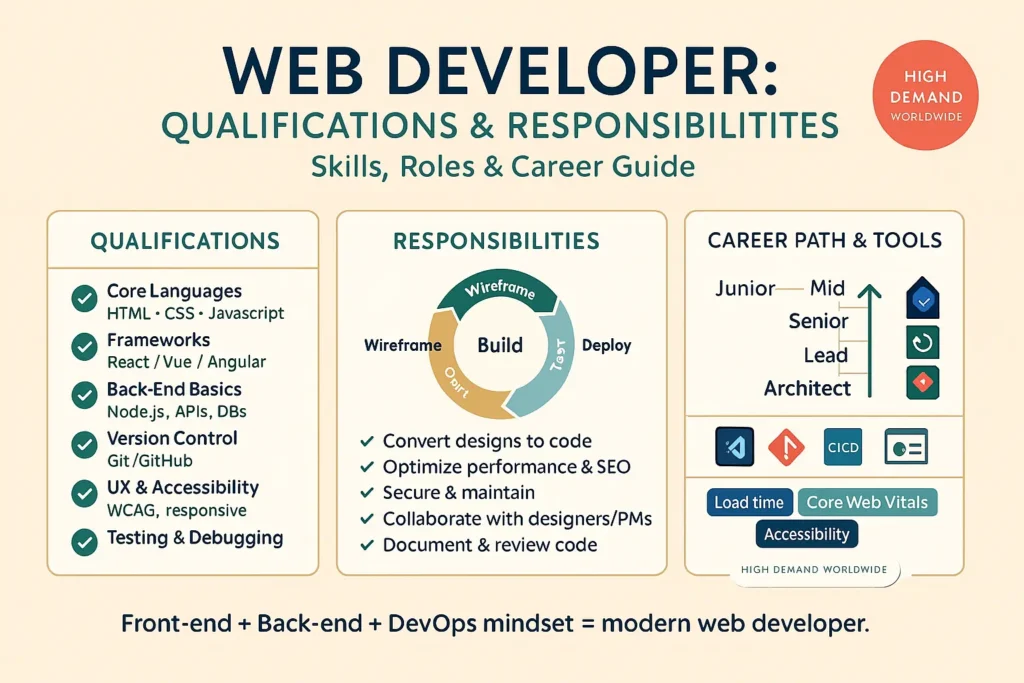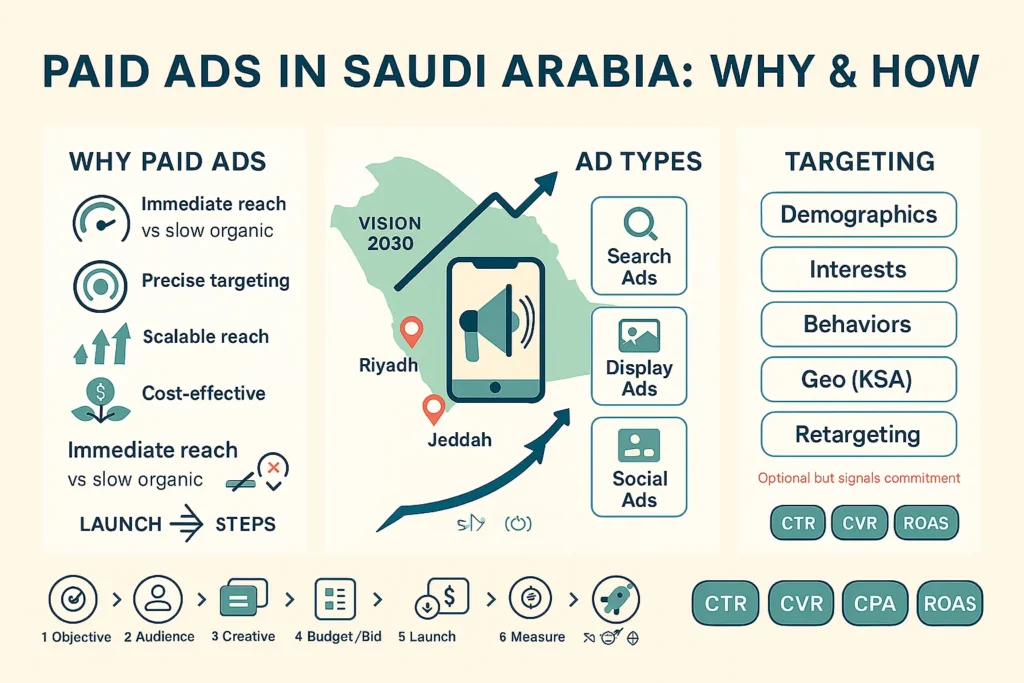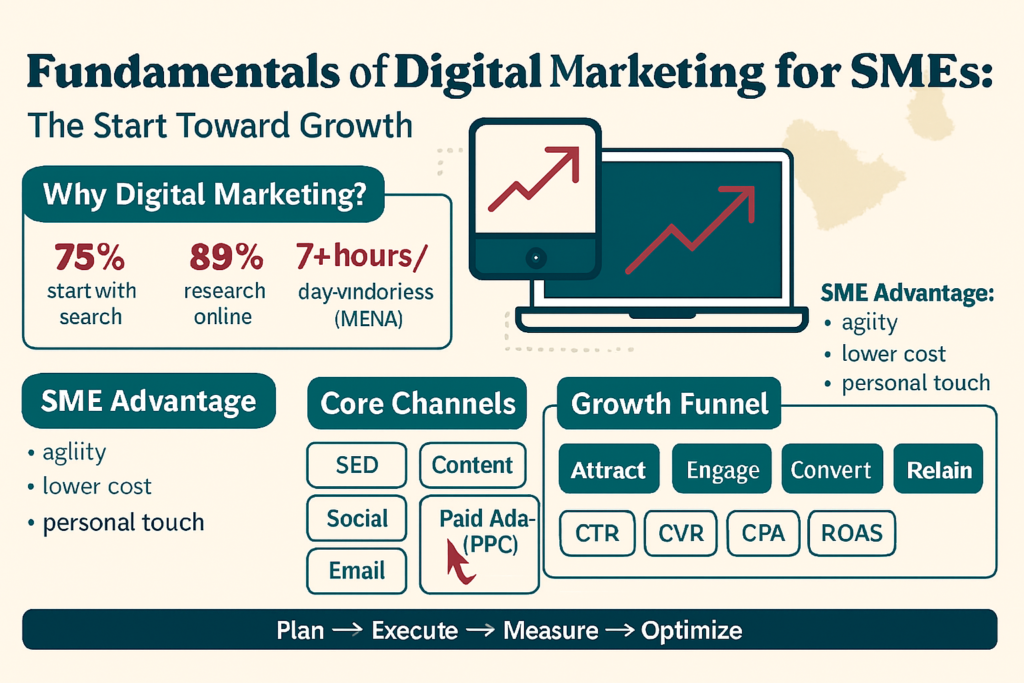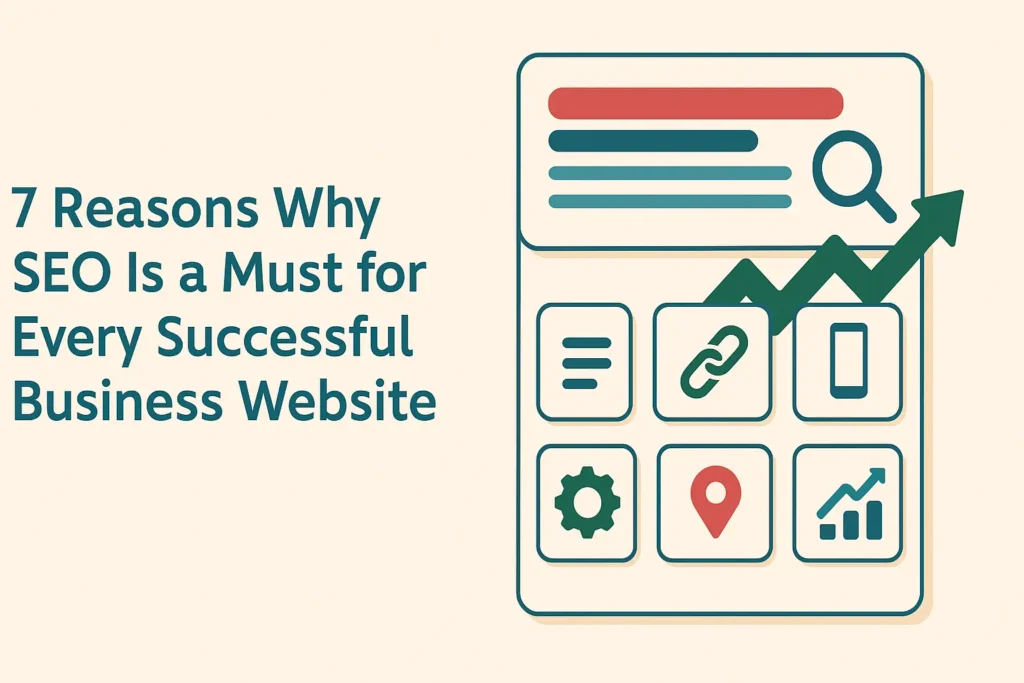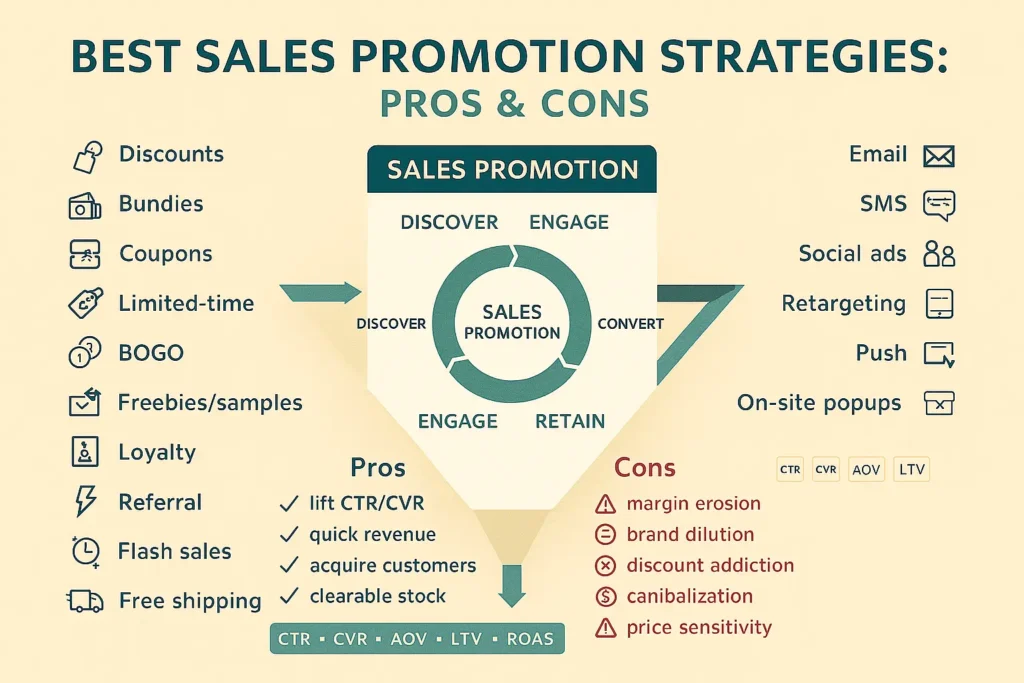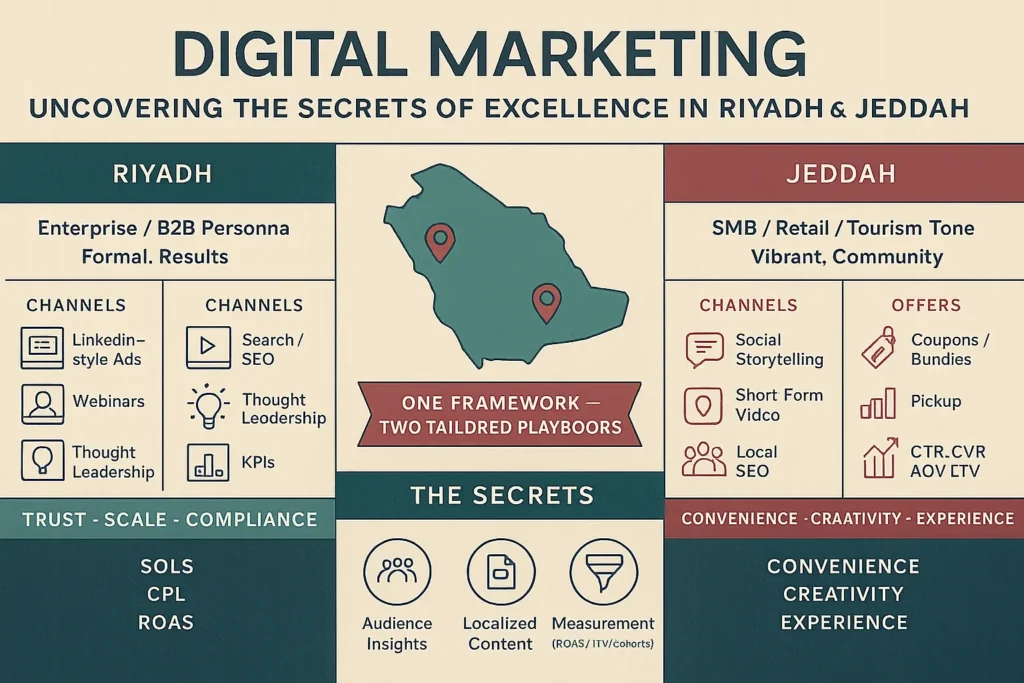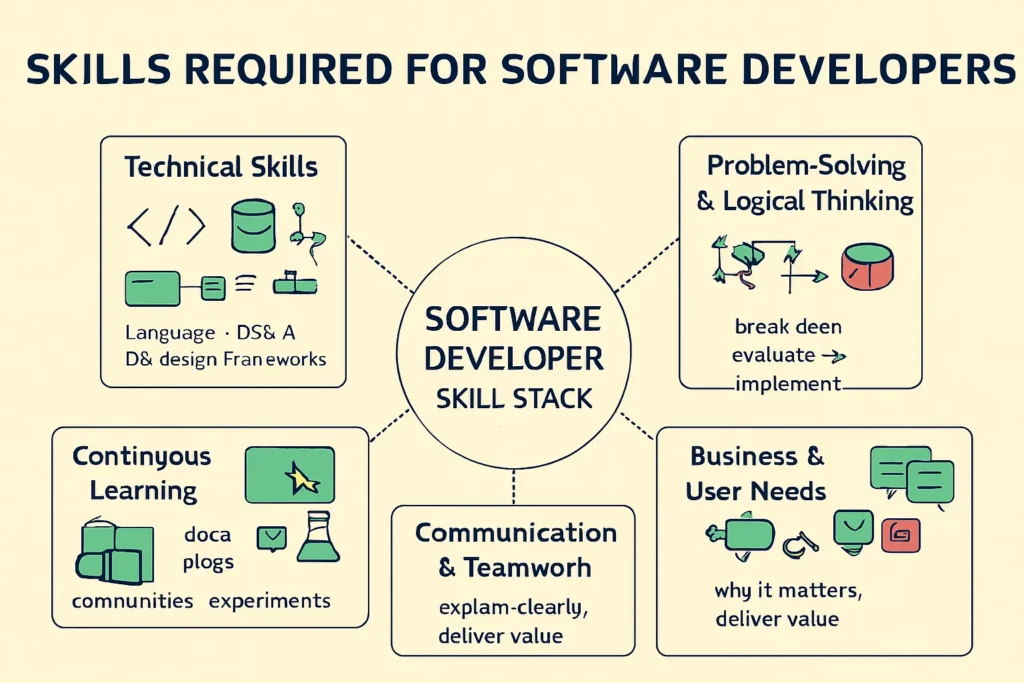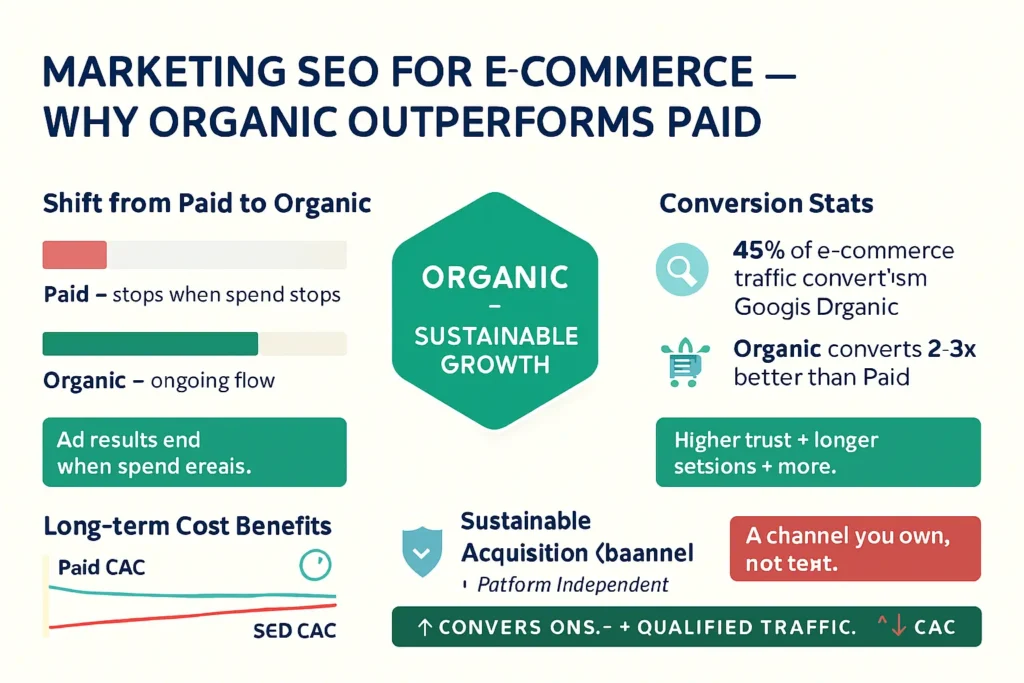
Marketing SEO for E-commerce: Attract More Customers Organically
Marketing SEO: Why E-commerce SEO Matters More Than Ever
The shift from paid advertising to organic search
The digital advertising landscape has become increasingly competitive and expensive. While paid advertising promises immediate visibility, it requires continuous investment to maintain results. The moment you stop spending on ads, your traffic disappears. This dependency creates an unsustainable cycle where businesses must constantly increase their advertising budgets to maintain market share.
Organic search, however, operates on a different principle. Once you achieve strong search rankings, they provide a consistent flow of qualified traffic without the ongoing costs associated with paid campaigns. This shift toward organic visibility represents a fundamental change in how successful e-commerce businesses approach customer acquisition.
Statistics showing organic traffic conversion rates vs paid traffic
Industry data reveals compelling differences between organic and paid traffic performance. Organic visitors typically convert at rates 2-3 times higher than paid traffic visitors. This occurs because organic searchers demonstrate genuine intent—they’re actively seeking solutions rather than being interrupted by advertisements.
Research consistently shows that customers view organic search results as more trustworthy than paid advertisements. This perception of credibility translates directly into higher engagement rates, longer session durations, and increased conversion rates. When visitors find your store through organic search, they’re more likely to explore multiple products, return for future purchases, and recommend your brand to others.
Long-term cost benefits of SEO investment
The financial advantages of SEO become increasingly apparent over time. While the initial investment in optimization requires significant resources, the long-term returns far exceed those of paid advertising. A well-optimized product page can generate consistent traffic for years, effectively reducing your customer acquisition cost to nearly zero for those visitors.
Consider the lifetime value of organic search rankings. A single piece of optimized content or a well-ranked product page can attract thousands of visitors over several years. This compounding effect means that early SEO investments continue paying dividends long after the initial work is completed. Unlike paid advertising, where you must pay for each click indefinitely, organic rankings provide ongoing value without additional per-visitor costs.
Building sustainable customer acquisition channels
Sustainable e-commerce businesses require diversified traffic sources that don’t depend on external advertising platforms. Organic search provides this independence, creating a customer acquisition channel that you control directly. This control becomes increasingly valuable as advertising costs rise and platform policies change.
Building organic visibility also creates a protective moat around your business. Competitors can quickly copy your advertising strategies or outbid you on paid campaigns, but replicating strong organic rankings takes significant time and effort. This competitive advantage becomes particularly valuable in saturated markets where advertising costs have become prohibitive for many businesses.
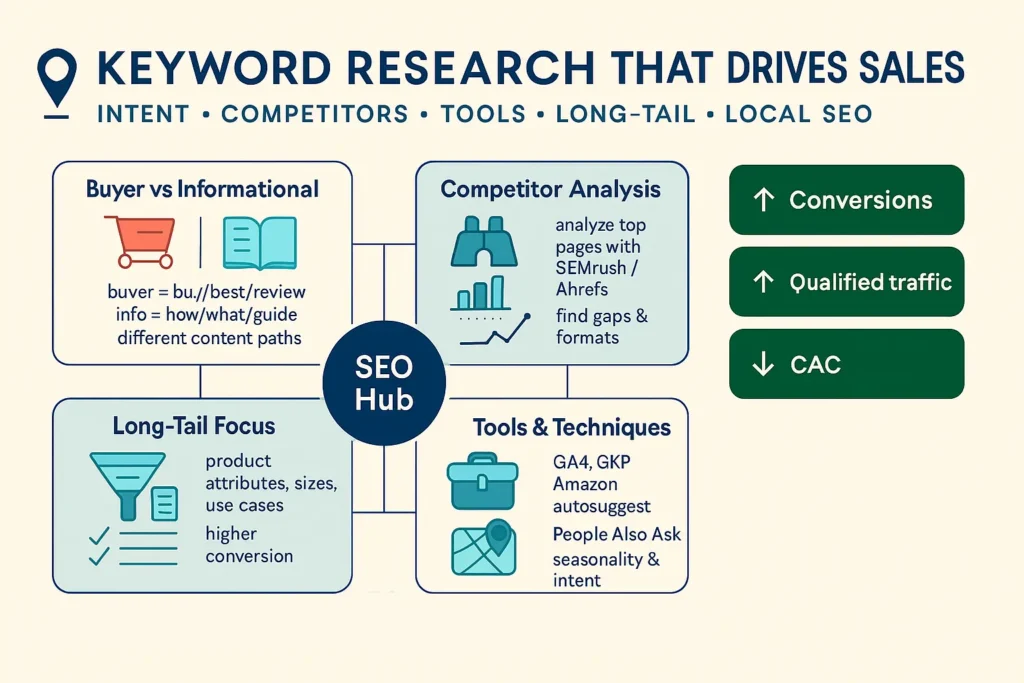
Foundation: Keyword Research That Drives Sales
Understanding buyer intent keywords vs informational keywords
Effective keyword research begins with understanding the different types of search intent behind customer queries. Buyer intent keywords reveal users who are ready to make purchase decisions, while informational keywords attract users in the research phase. Both serve important purposes in your e-commerce SEO strategy, but they require different approaches.
Buyer intent keywords typically include modifiers like “buy,” “purchase,” “best,” or “review.” These searchers have moved past the awareness stage and are actively evaluating options. For example, someone searching “best wireless headphones under $100” is much closer to purchasing than someone searching “how do wireless headphones work.”
Informational keywords, while appearing less valuable initially, serve a crucial role in building authority and capturing users early in their customer journey. These searches often include words like “how,” “what,” “why,” or “guide.” Creating content around these keywords helps establish your brand as a trusted resource and keeps you top-of-mind when users are ready to purchase.
Using competitor analysis to find profitable keywords
Your competitors have already invested significant resources in keyword research, and their strategies can provide valuable insights for your own optimization efforts. Analyzing competitor keywords reveals gaps in your current strategy and uncovers opportunities you might have missed.
Start by identifying your top 5-10 competitors and analyzing their highest-performing pages. Tools like SEMrush and Ahrefs can reveal which keywords drive the most traffic to their sites. Pay particular attention to keywords where competitors rank well but you don’t appear in the top results—these represent immediate opportunities for improvement.
Look beyond just the keywords themselves and examine the content formats that perform well. Are competitors succeeding with detailed buying guides, comparison articles, or comprehensive product descriptions? Understanding the content types that resonate with your target audience helps inform your own content strategy.
Tools and techniques for e-commerce keyword research
Modern keyword research extends far beyond basic search volume metrics. Effective e-commerce keyword research requires understanding seasonal trends, competition levels, and commercial intent. Google Keyword Planner remains a foundational tool, but it should be supplemented with specialized e-commerce research methods.
Amazon’s search suggestions provide exceptional insight into buyer behavior. When customers search on Amazon, they’re already in purchasing mode, making these suggestions incredibly valuable for understanding commercial intent. Simply begin typing your product categories into Amazon’s search bar and note the autocomplete suggestions—these represent real customer search patterns.
Google’s “People Also Ask” sections reveal related questions that customers commonly search for. These questions often represent opportunities for long-tail keyword targeting and content creation. Additionally, examining Google’s autocomplete suggestions for your seed keywords can uncover variations you might not have considered.
Long-tail keywords for product-specific searches
Long-tail keywords represent the foundation of successful e-commerce SEO. While shorter, more general keywords attract higher search volumes, they also face intense competition and often indicate less specific intent. Long-tail keywords, typically containing three or more words, capture users with specific needs and purchasing intent.
For example, instead of targeting the highly competitive keyword “running shoes,” consider long-tail variations like “women’s trail running shoes size 8” or “waterproof running shoes for winter.” These specific queries indicate users who know exactly what they want and are more likely to convert when they find relevant products.
Long-tail keywords also provide opportunities to target specific product attributes, use cases, and customer segments. A furniture retailer might target “small apartment dining table under $300” rather than the generic “dining table.” This specificity attracts customers whose needs align precisely with your products.
Local SEO keywords for businesses with physical locations
E-commerce businesses with physical locations can leverage local SEO to capture nearby customers who prefer in-person shopping or need immediate product availability. Local keywords combine product terms with geographical modifiers, creating opportunities to dominate local search results.
Local keyword research should include city names, neighborhood references, and “near me” variations. For example, “furniture store Chicago” or “bike shop near me” represent valuable local opportunities. These searches often indicate high commercial intent, as users typically seek immediate solutions.
Consider seasonal local opportunities as well. “Christmas tree lots near me” or “Halloween costume shops in [city]” represent time-sensitive local searches that can drive significant traffic during specific periods. Building landing pages optimized for these seasonal local keywords can capture valuable traffic from users ready to make immediate purchases.
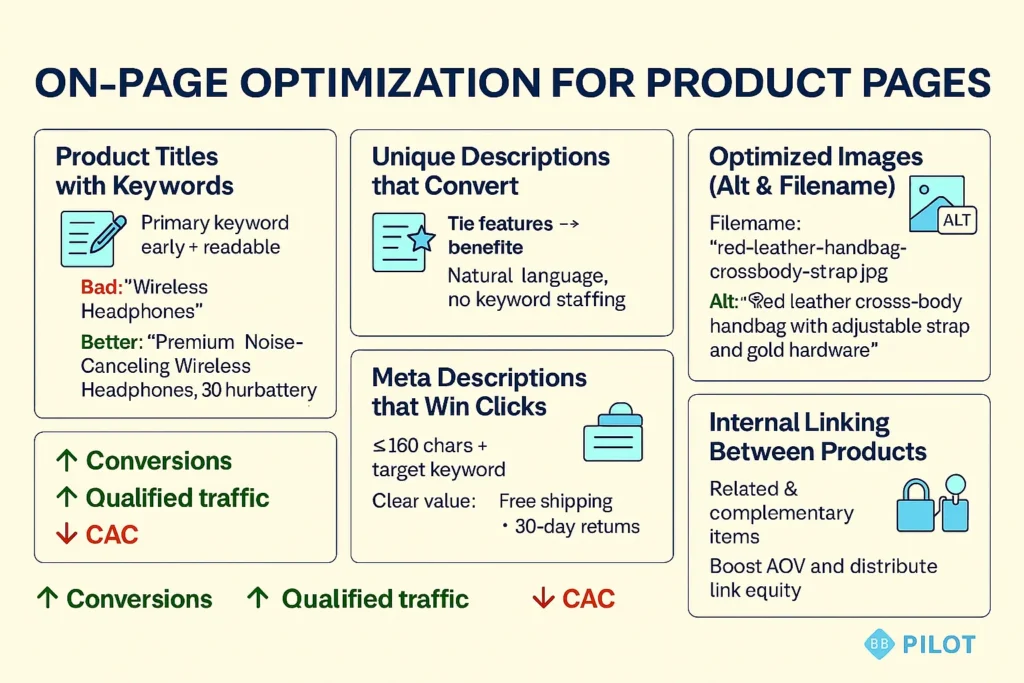
On-Page Optimization for Product Pages
Writing compelling product titles with target keywords
Product titles serve as the first impression for both search engines and potential customers. Effective titles must balance keyword optimization with compelling copy that encourages clicks. The best product titles include the primary keyword near the beginning while maintaining readability and appeal.
Consider the difference between “Wireless Headphones” and “Premium Noise-Canceling Wireless Headphones with 30-Hour Battery Life.” The second version includes more specific keywords while highlighting key benefits that differentiate the product. This approach helps the page rank for multiple related keywords while providing clear value propositions to potential customers.
Product titles should also reflect how customers naturally describe your products. If customers commonly search for “Bluetooth speakers” rather than “wireless speakers,” use their preferred terminology. This alignment between customer language and your optimization approach improves both search rankings and user experience.
Crafting unique product descriptions that convert
Product descriptions must serve dual purposes: providing search engines with keyword-rich content while persuading customers to make purchases. Generic manufacturer descriptions fail both objectives, creating duplicate content issues while missing opportunities to address specific customer concerns and benefits.
Effective product descriptions tell a story about how the product solves customer problems or improves their lives. Instead of simply listing features, connect each feature to a specific benefit. For example, rather than stating “waterproof construction,” explain “waterproof construction ensures your equipment stays dry during unexpected rain, protecting your investment and maintaining performance.”
Include relevant keywords naturally throughout the description, but prioritize readability and persuasion over keyword density. Modern search algorithms can detect keyword stuffing and may penalize pages that prioritize optimization over user experience. Focus on creating genuinely helpful content that addresses customer questions and concerns.
Optimizing product images with alt text and file names
Product images significantly impact both SEO and conversion rates, yet many e-commerce sites overlook image optimization opportunities. Properly optimized images can drive traffic through image search results while improving accessibility and overall user experience.
Image file names should be descriptive and include relevant keywords. Instead of “IMG_1234.jpg,” use descriptive names like “red-leather-handbag-crossbody-strap.jpg.” This approach helps search engines understand image content and can improve rankings in image search results.
Alt text provides crucial accessibility information while offering another opportunity for keyword inclusion. Effective alt text describes the image content accurately while incorporating relevant keywords naturally. For example, “Red leather crossbody handbag with adjustable strap and gold hardware” provides both accessibility and SEO benefits.
Creating SEO-friendly URLs and breadcrumb navigation
URL structure plays a crucial role in both user experience and search engine optimization. Clean, descriptive URLs help users and search engines understand page content and hierarchy. Effective e-commerce URLs should include relevant keywords while remaining concise and readable.
Compare these two URL structures: “yourstore.com/products/12345” versus “yourstore.com/womens-clothing/dresses/summer-maxi-dress.” The second version clearly indicates the product category and type, making it easier for both users and search engines to understand the page content.
Breadcrumb navigation reinforces your site’s structure while providing additional internal linking opportunities. Effective breadcrumbs show the complete path from homepage to current page, helping users understand their location within your site while distributing link equity throughout your category structure.
Meta descriptions that increase click-through rates
Meta descriptions function as advertisements for your pages in search results. While they don’t directly influence rankings, compelling meta descriptions can significantly improve click-through rates, which can indirectly boost your search performance.
Effective meta descriptions include your target keyword naturally while highlighting unique value propositions. Consider what differentiates your product from competitors and emphasize those benefits. For example, “Free shipping, 30-day returns, and lifetime warranty on all premium leather handbags” addresses common customer concerns while encouraging clicks.
Keep meta descriptions under 160 characters to ensure they display fully in search results. Use action-oriented language that creates urgency or excitement. Phrases like “Shop now,” “Limited time,” or “Exclusive collection” can encourage immediate action from search users.
Internal linking strategies between related products
Internal linking distributes authority throughout your site while helping customers discover related products. Strategic internal linking can increase average order value while improving search rankings for linked pages.
Product pages should link to related items, complementary products, and relevant category pages. For example, a dress product page might link to matching shoes, accessories, or other dresses in the same collection. These connections help customers find everything they need while keeping them engaged with your site.
Consider creating “customers also viewed” or “complete the look” sections that provide natural internal linking opportunities. These sections improve user experience while distributing link equity to important product pages throughout your site.
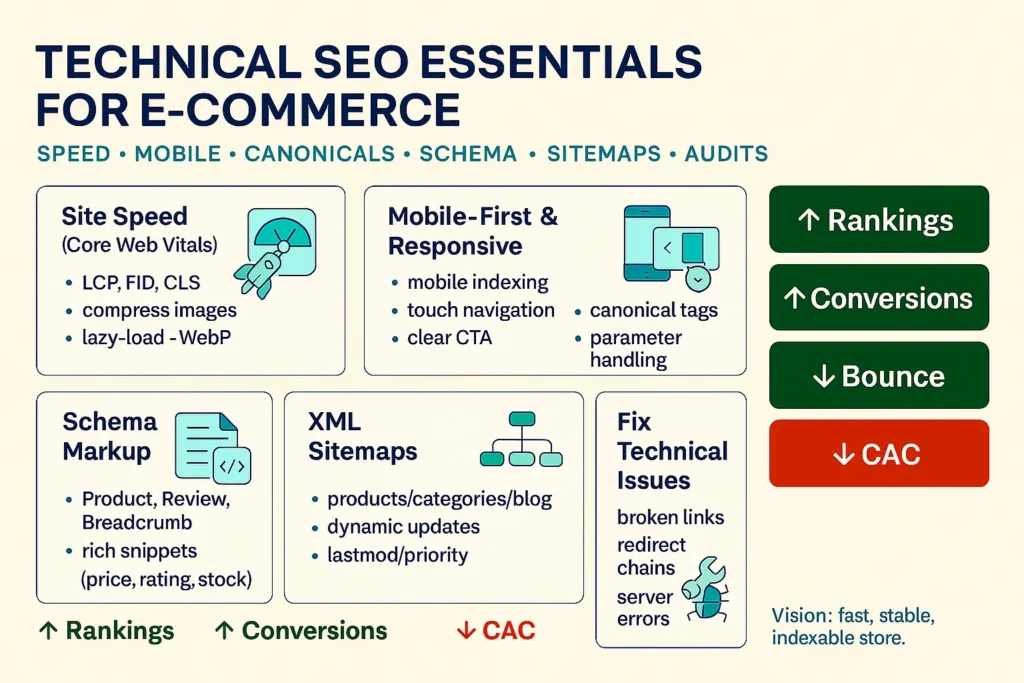
Technical SEO Essentials for E-commerce
Site speed optimization for better user experience
Website speed directly impacts both search rankings and conversion rates. Research consistently shows that even one-second delays in page loading can reduce conversions by 7%. For e-commerce sites, where every conversion represents direct revenue, speed optimization becomes critical for business success.
Page speed affects user experience at every stage of the customer journey. Slow-loading category pages frustrate users browsing your products, while slow product pages can derail purchase decisions. Even checkout process delays can cause cart abandonment, directly impacting your bottom line.
Google’s Core Web Vitals metrics provide specific benchmarks for speed optimization. Largest Contentful Paint (LCP) measures loading performance, First Input Delay (FID) measures interactivity, and Cumulative Layout Shift (CLS) measures visual stability. Each metric contributes to your overall search rankings while directly impacting user experience.
Image optimization represents one of the most impactful speed improvements for e-commerce sites. Compress product images without sacrificing quality, implement lazy loading for below-the-fold images, and use modern image formats like WebP when possible. These changes can dramatically reduce loading times while maintaining visual appeal.
Mobile-first design and responsive layouts
Mobile commerce continues to grow rapidly, with mobile devices accounting for increasingly large portions of e-commerce traffic. Google’s mobile-first indexing means your mobile site version primarily determines your search rankings, making mobile optimization essential for SEO success.
Responsive design ensures your site adapts smoothly to different screen sizes and orientations. However, true mobile optimization goes beyond responsive layouts. Mobile users have different needs and behaviors than desktop users, requiring tailored experiences that account for touch navigation, limited screen space, and often slower connections.
Mobile product pages should prioritize essential information and clear call-to-action buttons. Lengthy product descriptions can be condensed or organized in expandable sections. Navigation should be simplified for touch interaction, with appropriately sized buttons and intuitive gestures.
Consider mobile-specific features that can improve user experience and conversions. One-click purchasing options, mobile payment integration, and location-based services can provide competitive advantages while improving mobile search performance.
Managing duplicate content issues across product variations
E-commerce sites naturally create duplicate content challenges through product variations, similar products, and multiple category assignments. Search engines may struggle to determine which version of similar content to index, potentially diluting your search rankings across multiple pages.
Product variations represent a common duplicate content challenge. If you sell the same shirt in multiple colors, each variation might generate a separate page with nearly identical content. This duplication can confuse search engines and split ranking signals across multiple pages.
Canonical tags provide an effective solution for managing duplicate content. By implementing canonical tags that point to your preferred version of similar pages, you can consolidate ranking signals while maintaining separate pages for user experience purposes.
Parameter-based filtering systems can also create duplicate content issues. When users filter category pages by price, brand, or other attributes, the system might generate multiple URLs with similar content. Implementing proper canonical tags and parameter handling prevents these technical issues from impacting your search performance.
Implementing schema markup for rich snippets
Schema markup provides structured data that helps search engines understand your content better. For e-commerce sites, schema markup can generate rich snippets that display additional information in search results, including product ratings, prices, availability, and review counts.
Product schema markup can significantly improve your search visibility by displaying star ratings, pricing information, and availability directly in search results. These enhanced listings often attract more clicks than standard results, improving your click-through rates and potentially boosting your rankings.
Review schema markup allows customer ratings and reviews to appear in search results, providing social proof that can influence clicking behavior. These rich snippets help your listings stand out from competitors while building trust with potential customers before they visit your site.
Breadcrumb schema markup helps search engines understand your site structure while potentially displaying navigation paths in search results. This enhanced display can improve user experience while reinforcing your site’s organizational structure for search engines.
Creating XML sitemaps for better crawling
XML sitemaps provide search engines with a roadmap of your site’s important pages, ensuring that new products and content are discovered and indexed quickly. For e-commerce sites with frequently changing inventory, sitemaps become crucial for maintaining search visibility.
Product sitemaps should include all active product pages with relevant metadata such as last modification dates, update frequencies, and priority levels. This information helps search engines understand which pages are most important and how often they should be crawled.
Separate sitemaps for different content types can improve crawling efficiency. Consider creating dedicated sitemaps for product pages, category pages, blog content, and static pages. This organization helps search engines allocate crawling resources effectively while ensuring all important content is discovered.
Dynamic sitemap generation ensures that new products appear in your sitemap automatically while discontinued products are removed promptly. This automation prevents crawling errors while ensuring that your sitemap accurately reflects your current inventory.
Fixing common technical issues that hurt rankings
Technical SEO issues can significantly impact your search rankings while remaining invisible to casual site visitors. Regular technical audits help identify and resolve issues before they affect your search performance.
Broken links create poor user experiences while potentially indicating quality issues to search engines. Implement regular link checking to identify and fix broken internal links, especially those pointing to discontinued products or moved pages.
Redirect chains occur when multiple redirects connect the original URL to the final destination. These chains slow down crawling and can dilute ranking signals. Audit your redirect structure regularly to ensure that redirects point directly to final destinations when possible.
Server errors prevent search engines from accessing your content, potentially causing important pages to be removed from search results. Monitor server performance and implement proper error handling to minimize crawling disruptions.
Crawl budget optimization becomes important for larger e-commerce sites with thousands of products. Ensure that search engines focus their crawling resources on your most important pages by using robots.txt files, canonical tags, and strategic internal linking.
Keep reading and uncover secrets that can change the way you work. Is Product Marketing Worth Hiring? Here Are the Numbers and Benefits
Content Marketing and Link Building
Creating valuable blog content that attracts organic traffic
Content marketing serves as the foundation for sustainable organic growth in e-commerce. While product pages target commercial keywords, blog content captures informational searches that occur earlier in the customer journey. This broader content strategy helps establish your brand as a trusted resource while attracting potential customers who aren’t yet ready to purchase.
Effective e-commerce blog content addresses customer questions, concerns, and interests related to your products. Instead of creating generic articles, focus on content that directly supports your sales objectives. Buying guides, product comparisons, and educational content that showcases your expertise can attract qualified traffic while building trust with potential customers.
Consider seasonal content opportunities that align with your product catalog. An outdoor gear retailer might create comprehensive guides for different seasons, while a fashion retailer could focus on seasonal style guides and trend predictions. This approach captures timely search traffic while demonstrating product knowledge.
Tutorial and how-to content can drive significant traffic while showcasing your products in action. These articles provide genuine value to readers while naturally incorporating product recommendations and demonstrations. For example, a kitchen supply retailer might create detailed cooking guides that feature their products as essential tools.
Building authority through industry-relevant content
Industry authority develops through consistent publication of high-quality, expertly crafted content that addresses real customer needs. This authority translates into improved search rankings, increased trust from potential customers, and enhanced brand recognition within your market.
Expert roundups and interviews can quickly establish your brand as a thought leader while building relationships with industry influencers. These collaborations often result in natural backlinks and social media mentions that boost your overall search authority.
Data-driven content, such as industry reports and trend analyses, positions your brand as a knowledgeable resource while creating highly shareable content. Original research and surveys can generate significant attention from both customers and industry publications, often resulting in valuable backlinks and media coverage.
Guest expertise opportunities allow you to contribute to industry publications while building backlinks to your site. Focus on publications that your target customers read, ensuring that your contributions reach qualified audiences while building domain authority.
Earning natural backlinks through quality content
Natural backlinks occur when other websites voluntarily link to your content because it provides value to their audiences. These authentic links carry more weight with search engines than artificially acquired links while building genuine relationships within your industry.
Linkable asset creation involves developing content specifically designed to attract backlinks. Comprehensive guides, original research, industry reports, and useful tools often attract links from other websites seeking to reference authoritative resources.
Visual content, including infographics, charts, and interactive tools, often attracts more backlinks than text-only content. These visual assets are easily shareable and provide value to other websites looking to enhance their own content with engaging visuals.
Resource page inclusion represents another natural link-building opportunity. Many websites maintain resource pages that link to helpful tools, guides, and industry information. Creating content that deserves inclusion on these pages can generate valuable backlinks while connecting with relevant audiences.
Guest posting and partnership opportunities
Strategic guest posting builds relationships with industry publications while earning high-quality backlinks. Effective guest posting focuses on providing genuine value to the host publication’s audience rather than simply promoting your products.
Partnership collaborations can create mutually beneficial content opportunities. Partnering with complementary brands, industry experts, or influencers can result in co-created content that benefits all parties while generating natural backlinks and social media attention.
Supplier and vendor relationships often provide untapped link-building opportunities. Many suppliers maintain directories or feature customer success stories that can provide valuable backlinks while showcasing your business partnerships.
Industry association participation can generate both backlinks and credibility. Many trade associations offer member directories, guest posting opportunities, and collaborative content projects that can enhance your search authority while building industry connections.
Leveraging customer reviews and testimonials
Customer reviews provide fresh, user-generated content that search engines value while building trust with potential customers. Reviews often contain natural keyword variations and long-tail phrases that customers use when searching for products.
Review schema markup ensures that customer ratings appear in search results, creating rich snippets that can improve click-through rates. These enhanced listings often perform better than standard search results while providing social proof before users visit your site.
Testimonial collection and display can provide content for multiple marketing channels while building credibility. Video testimonials, case studies, and detailed customer stories can attract backlinks while demonstrating real-world product benefits.
User-generated content campaigns encourage customers to create content featuring your products. This approach generates authentic content while building community engagement and potentially attracting backlinks from customer websites and social media profiles.
Social proof and its impact on Marketing SEO
Social proof signals, including customer reviews, social media mentions, and industry recognition, indirectly influence search rankings while directly impacting conversion rates. Search engines consider various engagement signals when evaluating content quality and relevance.
Social media amplification can increase content visibility and attract backlinks from users who discover your content through social channels. While social media links typically don’t directly impact search rankings, the increased visibility often leads to organic backlinks from other websites.
Industry awards and recognition can generate valuable backlinks while building credibility. Awards often result in coverage from industry publications and directories, creating natural link-building opportunities while enhancing your brand reputation.
Press coverage and media mentions provide authoritative backlinks while building brand awareness. Developing relationships with industry journalists and maintaining an active public relations strategy can generate ongoing coverage that benefits both SEO and overall marketing objectives.
Keep reading and uncover secrets that can change the way you work. How Social Media Marketing in Jeddah Can Skyrocket Your Sales with AI Support
Measuring Your Marketing SEO Success
Essential metrics to track organic growth
Measuring SEO success requires tracking multiple metrics that collectively indicate your optimization efforts’ effectiveness. While rankings remain important, modern SEO measurement focuses on business impact metrics that directly correlate with revenue and growth.
Organic traffic growth provides the most fundamental SEO metric, indicating whether your optimization efforts are attracting more visitors. However, traffic volume alone doesn’t indicate success—the quality and engagement of organic visitors matter more than raw numbers.
Conversion rate optimization becomes crucial when evaluating SEO success. Organic traffic that doesn’t convert into sales or leads provides limited business value. Track conversion rates specifically for organic traffic to ensure that your SEO efforts attract qualified visitors who take desired actions.
Revenue attribution to organic channels demonstrates SEO’s direct business impact. Many businesses struggle to connect SEO efforts with revenue results, but proper tracking can reveal significant returns on optimization investments.
Using Google Analytics and Search Console effectively
Google Analytics 4 provides comprehensive insights into organic traffic performance, user behavior, and conversion tracking. Proper configuration ensures accurate attribution of organic traffic while providing detailed insights into user journeys from search to conversion.
Search Console offers unique insights into search performance, including impression data, click-through rates, and ranking positions. This data reveals opportunities for improvement while tracking progress over time.
Custom reporting and dashboard creation can streamline SEO monitoring while focusing attention on the most important metrics. Automated reporting ensures consistent monitoring while reducing manual analysis time.
Goal tracking and conversion attribution help connect SEO efforts with business outcomes. Proper goal configuration ensures that you can measure the complete impact of organic traffic on your business objectives.
Monitoring keyword rankings and traffic improvements
Keyword ranking monitoring provides insights into your search visibility while revealing opportunities for improvement. However, modern SEO requires looking beyond simple ranking positions to understand the complete search landscape.
Search visibility metrics consider both rankings and search volumes to provide a more complete picture of your organic performance. These metrics help identify which keywords drive the most valuable traffic while revealing expansion opportunities.
Competitor ranking analysis reveals market share opportunities while identifying successful strategies worth emulating. Understanding competitor performance helps prioritize optimization efforts while revealing gaps in your current strategy.
Long-tail keyword performance often provides the most valuable insights for e-commerce sites. While individual long-tail keywords may have lower search volumes, collectively they can drive significant traffic and conversions.
Calculating ROI from organic traffic
SEO ROI calculation requires understanding both the costs of optimization efforts and the revenue generated from organic traffic. This analysis helps justify continued SEO investment while identifying the most profitable optimization strategies.
Customer lifetime value consideration becomes important when calculating SEO ROI. Organic customers often have higher lifetime values than paid traffic, making the long-term value of SEO efforts more significant than initial conversion data suggests.
Cost comparison with paid advertising reveals SEO’s competitive advantages while helping allocate marketing budgets effectively. Understanding the relative costs and benefits of different traffic sources guides strategic decision-making.
Adjusting strategies based on performance data
Data-driven optimization requires regular analysis of performance metrics followed by strategic adjustments based on insights. This iterative approach ensures that SEO efforts remain effective while adapting to changing market conditions.
A/B testing different optimization approaches helps identify the most effective strategies while minimizing risk. Testing different title tags, meta descriptions, and content approaches can reveal significant improvement opportunities.
Seasonal adjustment recognition helps optimize for predictable traffic patterns while preparing for seasonal opportunities. Understanding how search behavior changes throughout the year enables proactive optimization strategies.
Algorithm update response requires monitoring search performance during known algorithm changes while adjusting strategies based on new ranking factors. Staying informed about search engine updates helps maintain search visibility during transitions.
Keep reading and uncover secrets that can change the way you work. Successful E-Commerce and Digital Marketing Strategies for the Saudi Market
Your Path to Organic Growth Success
Creating a realistic Marketing SEO timeline and expectations
SEO success requires patience and realistic expectations about timeline and results. Unlike paid advertising, which can generate immediate traffic, organic search optimization typically requires 3-6 months to show significant results, with full benefits often taking 12-18 months to materialize.
Initial optimization efforts should focus on technical foundations and quick wins that can demonstrate early progress. Fixing site speed issues, optimizing existing product pages, and implementing basic schema markup can provide relatively quick improvements while building momentum for longer-term strategies.
Competitive market analysis helps set realistic expectations based on your industry and competition level. Highly competitive markets require more time and resources to achieve top rankings, while niche markets may offer faster results with focused optimization efforts.
Prioritizing quick wins vs long-term strategies
Balancing immediate improvements with long-term growth strategies ensures continued progress while building sustainable competitive advantages. Quick wins can provide early momentum while longer-term strategies build lasting search authority.
Technical SEO improvements often provide the fastest results, especially for sites with significant technical issues. Site speed optimization, mobile improvements, and crawling issues can be resolved relatively quickly while providing immediate benefits.
Content optimization for existing pages can generate faster results than creating new content. Improving product descriptions, optimizing title tags, and enhancing meta descriptions can boost rankings for pages that already have some search authority.
Long-term content strategies require sustained effort but provide the greatest competitive advantages. Building topical authority through comprehensive content creation takes time but creates lasting differentiation from competitors.
Building a Marketing SEO-focused team or finding the right partners
Successful SEO implementation requires diverse skills, including technical expertise, content creation, and strategic planning. Many businesses benefit from combining in-house capabilities with specialized external support.
Internal team development should focus on SEO fundamentals while building capabilities that can be sustained long-term. Training existing marketing staff on SEO basics creates internal advocacy while building organizational knowledge.
Agency partnerships can provide specialized expertise while allowing internal teams to focus on core business activities. Choosing the right SEO partner requires evaluating experience, communication style, and alignment with business objectives.
Hybrid approaches combining internal management with external expertise often provide the best results. This model maintains control over strategy while accessing specialized skills for implementation.
Staying updated with algorithm changes and best practices
Search engine algorithms continuously evolve, requiring ongoing education and strategy adjustment. Staying informed about changes helps maintain search visibility while adapting to new ranking factors.
Industry resource monitoring through reputable Marketing SEO publications, conferences, and professional networks provides insights into algorithm changes and best practices. Regular education ensures that optimization strategies remain current and effective.
Testing and experimentation help validate new strategies while identifying opportunities for improvement. A culture of testing and learning enables rapid adaptation to algorithm changes while discovering unique competitive advantages.
Next steps to implement your e-commerce Marketing SEO strategy
Implementation success requires a systematic approach with clear priorities and measurable objectives. Starting with foundational elements while building toward comprehensive optimization ensures steady progress without overwhelming available resources.
Initial audit and assessment should identify the most critical issues while establishing baseline metrics for future comparison. Understanding current performance provides context for measuring improvement over time.
Prioritized action planning helps focus efforts on the most impactful improvements while building momentum through early successes. Clear timelines and responsibilities ensure consistent progress toward SEO objectives.
Continuous optimization culture ensures that SEO becomes an integral part of business operations rather than a one-time project. This approach maximizes long-term results while building sustainable competitive advantages.
Turn your goals into real achievements with our tailored services – request the service now.
Frequently Asked Questions (FAQ)
How long does it take to see results from e-commerce Marketing SEO?
Typical timeline expectations for e-commerce SEO results vary significantly based on several factors, but most businesses begin seeing initial improvements within 3-6 months of consistent optimization efforts. Technical improvements and quick wins, such as site speed optimization and basic on-page improvements, can show results within 4-8 weeks.
Significant ranking improvements and traffic growth typically require 6-12 months of sustained effort, particularly for competitive keywords. New websites or those with limited existing authority may require 12-18 months to achieve substantial results, while established sites with good technical foundations can see improvements more quickly.
Factors that influence speed include competition level, current website authority, technical condition of the site, and the consistency of optimization efforts. Sites in highly competitive markets or those starting with significant technical issues will require more time to achieve meaningful results.
What’s the difference between e-commerce Marketing SEO and regular SEO?
E-commerce SEO presents unique challenges and opportunities that distinguish it from traditional website optimization. Product-focused content requires balancing commercial intent with informational value, while managing large inventories creates technical challenges around duplicate content and site architecture.
E-commerce sites must optimize for transactional keywords while building authority through educational content. This dual approach requires different strategies than service-based businesses or content-focused websites. Product pages need optimization for specific, often long-tail keywords, while category pages must balance user experience with search optimization.
Technical considerations for e-commerce sites include managing inventory changes, handling product variations, implementing schema markup for rich snippets, and ensuring fast loading times for image-heavy pages. These technical requirements are more complex than those of typical business websites.
Should I focus on SEO or paid advertising first?
The choice between SEO and paid advertising depends on your business goals, timeline, and available resources. Paid advertising provides immediate traffic and faster feedback on market demand, making it valuable for new businesses or product launches. However, it requires ongoing investment and provides no lasting value once spending stops.
Marketing SEO requires a longer-term commitment but builds sustainable competitive advantages. Businesses with limited ongoing Marketing SEO budgets often benefit more from SEO investment, while those needing immediate results may start with paid advertising while building SEO foundations.
A hybrid approach often works best, using paid advertising for immediate traffic while simultaneously building SEO foundations for long-term growth. This strategy provides short-term results while building sustainable customer acquisition channels.
How much should I budget for e-commerce Marketing SEO?
Investment ranges for e-commerce Marketing SEO vary significantly based on business size, market competition, and current website condition. Small businesses might invest $2,000-5,000 monthly for comprehensive SEO services, while larger enterprises may invest $10,000-50,000 monthly for extensive optimization programs.
Expected returns depend on industry and implementation quality, but many businesses see 300-500% ROI from SEO efforts within 12-18 months. The key is viewing Marketing SEO as a long-term investment rather than a short-term expense.
Budget allocation should consider both one-time technical improvements and ongoing optimization efforts. Initial technical audits and fixes may require larger upfront investments, while ongoing content creation and optimization require sustained monthly investment.
Can I do e-commerce Marketing SEO myself, or do I need an expert?
DIY e-commerce Marketing SEO is possible for business owners willing to invest significant time in learning and implementation. Many technical improvements and basic optimization tasks can be completed without specialized expertise, particularly for smaller product catalogs.
However, professional Marketing SEO services become valuable when dealing with complex technical issues, large inventories, or highly competitive markets. Expert knowledge can accelerate results while avoiding costly mistakes that might harm search performance.
A hybrid approach often works well, with business owners handling basic optimization while consulting experts for technical implementation and strategic guidance. This approach maximizes results while controlling costs and building internal capabilities.
The decision ultimately depends on available time, technical comfort level, and business priorities. Businesses with limited time or complex technical requirements often benefit more from professional services, while smaller businesses with simpler needs may successfully implement DIY strategies.
